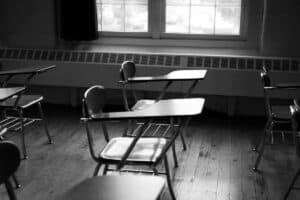The cost of educating a child is for many parents across South Africa- their number one concern. Especially when one factors in sharp increases in education inflation, with the figure for 2017 expected to be as high as 9.5%.

“Alarmingly, education inflation is higher than South Africa’s Consumer Price Index (CPI) and this gap has widened from around 2% in the early 2000s to a probable 4% in 2017. This means that a parent whose child starts grade R in 2017 can expect to pay between *R1 332 112 and R3 011 415 – for public or private education respectively. This rand amount includes primary school, high school and a three year University qualification in 2032,” says Old Mutual’s head of financial education, John Manyike.
He also notes that parents are not saving enough to be able to provide for their children’s education and the related inflation of these costs. He references the 2016 Old Mutual Savings and Investment Monitor, which revealed that 54% of urban South African parents are still not actively saving for their children’s education.
“Saving for education is like saving for your retirement, you wouldn’t start a year or two before you need to retire. So the best course of action is to start saving as early as possible. Even if you can only afford a small amount to begin with, the important thing is to start. There are a number of educational policies or savings instruments in the market and you should ask your financial advisor to assist you with a financial plan,” adds Manyike.
He also notes that parents should consider a number of additional costs, beyond only the fees of educational institutions. “You also need to factor in the costs of school uniforms, text books, stationery, transport, food, extra lessons, extra mural activities, pocket money, accommodation, etc. when putting together a financial plan for your child’s education.”
Manyike encourages parents to consult financial advisors to explore savings instruments that offer inflation-beating capability, the flexibility of a lump sum contribution or scheduled contributions as well as ensure that parents are aware of the corresponding risks associated with each type of investment. He also notes that parents should make sure they are dealing with an accredited financial advisor and a reputable financial institution that will be transparent and provide all legal disclosures to parents.
“The gift of education is the best thing you can offer your children as it will prepare them for life and will give them a good start. Furthermore, a well-educated youth is essential to the sustainability of South Africa’s economy,” concludes Manyike.
* Cost of one year’s education in 2017, 2022, 2030 and 2035
| 2017 | Primary or High School – Public | R 32 000 |
| Primary School – Private | R 78 000 | |
| High School – Private | R 125 000 | |
| University | R 54 000 | |
| 2022 | Primary or High School – Public | R 50 000 |
| Primary School – Private | R 122 000 | |
| High School – Private | R 197 000 | |
| University | R 85 000 | |
| 2030 | Primary or High School – Public | R 103 000 |
| Primary School – Private | R 253 000 | |
| High School – Private | R 406 000 | |
| University | R 176 000 | |
| 2035 | Primary or High School – Public | R 149 000 |
| Primary School – Private | R 364 000 | |
| High School – Private | R 584 000 | |
| University | R 253 000 |
For more financial tips, please join the Old Mutual digital community by liking the ‘On the Money’ financial education programme on Facebook or follow the twitter handle @om_onthemoney or request your free financial education workshop for your community group or group of employees by emailing your request to [email protected].
-Brought to you by Moneyweb
For more news your way, follow The Citizen on Facebook and Twitter.






